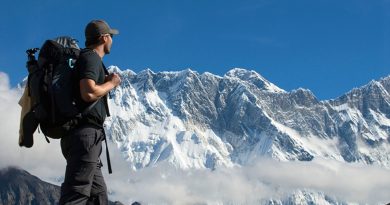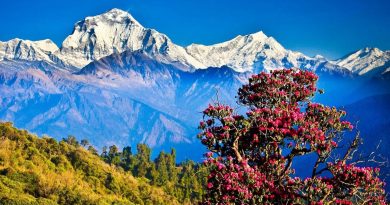Gosaikunda: A mixture of Adventure and Spiritualism
Gosaikunda is arranged at a height of 4,380 meters above ocean level in the Langtang National Park in Rasuwa. There are four distinct path one can use to reach Gosaikunda from Rasuwa, Nuwakot and Sindhupalchok regions: Kathmandu-Dhunche-Gosaikunda; Melamchi-Kutumsang-Thadepati-Gosaikunda; Sundarijal-Kutumsang-Gosaikunda; and Ghyangphedi-Yarsa-Gosaikunda.
Of them, the Kathmandu-Dhunche-Gosaikunda trail is the most famous. It takes around six hours on a transport to reach Dhunche, the area home office of Rasuwa, found 117 kilometers from Kathmandu. Dhunche is a modest community that sees cool climate consistently and snowfall throughout the winter.
It is from Dhunche that the trek to Gosaikunda starts. On the main day, one will effortlessly reach Chandanbari or Lauribina by the night. The course is wealthy in vegetation, reliably offering grand perspectives on the snow-clad mountains. Along the course, spots like Ghattekhola, Deurali, Dimsa, Chandanbari, Cholangpati, Lauribina, Buddhadanda, Ganesh Gauda make for good vantage focuses to watch the moving slopes and mountain pinnacles, for example, Mt Langtang and Mt Ganesh. One scopes Gosaikunda on the third day of the excursion. The path is brimming with high points and low points and gets tight in certain parts.

The highlights the path offers relies upon the season. On the off chance that one goes in March or April, one can see the undulating slopes painted red with at any rate 16 distinct types of rhododendron. The woods are home to uncommon untamed life, for example, red panda, musk deer and a few types of flying creatures in the midst of its wild greenery.
The trekking trail goes through a few settlements of the Tamang individuals, who have their common custom and culture. The trekkers can openly converse with local people and revel at their lifestyle and culture. There is a memorable religious community in Chandanbari, local people call it as Sing Gompa. Stop by the gompa to light some margarine lights, to tune in to the supplicating priests or just to rest your exhausted soul.
In Chandanbari you’ll likewise go over a cheddar processing plant where most explorers drop in to taste the nearby yak cheddar. Some even have it pressed to nibble on later.
The trekking trail is additionally home to the red panda, a timid and magnetic imperiled warm blooded creature species called Habre in Nepali. To get a brief look at these subtle creatures, you need to walk three/four kilometers from the principle trekking trail. A view tower has been built in Polangpati which is around four kilometers from Cholangpati. As indicated by the traditionalists, Polangpati, Cholangpati, Gupche, Dhokachet are the significant living spaces of the red panda.
Gosaikunda is a high freshwater oligotrophic lake around 600 meters in length and 370 meters wide. There are a few different lakes around Gosaikunda: Bhairavkunda, Saraswatikunda, Suryakunda, Raktakunda, Chandrakunda, Aamakunda, and Dudhkunda, among others. It is accepted that there are out and out 108 lakes in the region of this Ramsar site.
Vacationers, both remote and residential, visit the zone around the year. September to November and March to May are the primary trekking seasons in this locale. A few decades back, it was outsiders who might for the most part be seen trekking however generally local visitors are viewed as similarly eager trekkers, as per the travel industry business people. “Other than pioneers, the quantity of local voyagers who come only for treks has been essentially ascending in the previous two years,” said Subba Lama, who possesses an inn in Chandanbari.
Other than trekkers, Gosaikunda sees an immense number of pioneers for the most part during two significant celebrations—Janai Purnima and Gangadasahara. The heavenly Gosaikunda lake has unrivaled significance for Hindu and Buddhist explorers. The Hindus accept that all the Hindu gods slip to the lake in Janaipurnima, and hence, taking a heavenly dunk in the lake is their opportunity to draw nearer to godliness.

As indicated by Hindu folklore, Gosaikunda is the habitation of Hindu god Shiva and goddess Parvati. Different Hindu sacred texts allude to Samudra Manthan, which is legitimately identified with the beginning of Gosaikunda. The lake is accepted to have been made by Lord Shiva when he push his trident into a mountain to remove water with the goal that he could cool his consuming throat subsequent to gulping poison during Samudra Manthan.
Gosaikunda lake holds equivalent centrality for Buddhists as it accomplishes for Hindus. As per Phurpa Tamang, an occupant of Gosaikunda, who has composed broadly on Tamang culture, for Buddhists Gosaikunda lake is of most extreme significance with the greater part of them visiting the sacred lake to pay respect to the withdrew spirits, appealing to God for their prosperity in life following death. On the late evening going before Janaipurnima, a parade drove by Jhankris (shamans) advances towards the lake singing tunes and reciting songs en route.
Other than strict significance, the Gosaikunda region has memorable importance too. Amarsingh Thapa, the Nepali authority of the western front during the Anglo-Nepal war (1814-1816) had headed out to Gosaikunda and had inhaled his last during the journey. Today a collapse the zone is named in his respect reminding his comrades about his support of the nation.
From looking for experience to extinguishing one’s profound ache to a stroll down the history path, an excursion to Gosaikunda will meet every one of your desires. Be that as it may, before you choose to travel to Gosaikunda, be readied—genuinely and intellectually. It’s a high elevation trek and novices are encouraged to go slowly. As you step by step climb to Dhunche, oxygen level lessens. Walk deliberately, gradual, and give yourself an opportunity to relax. In the event that you give any indications of height infection, it’s prudent to promptly begin your plunge.
The trekking trail from Dhunche to Gosaikunda just has 14 lodgings and the accessibility of rooms are thin during the trekking seasons, so be set up to set up a shelter and camp. On the off chance that you are in the region during the strict celebrations—Janaipurnima and Gangadasahara—you wouldn’t need to stress over settlement. There will be brief cottages worked for pioneers and you can be a piece of the network living while there.




